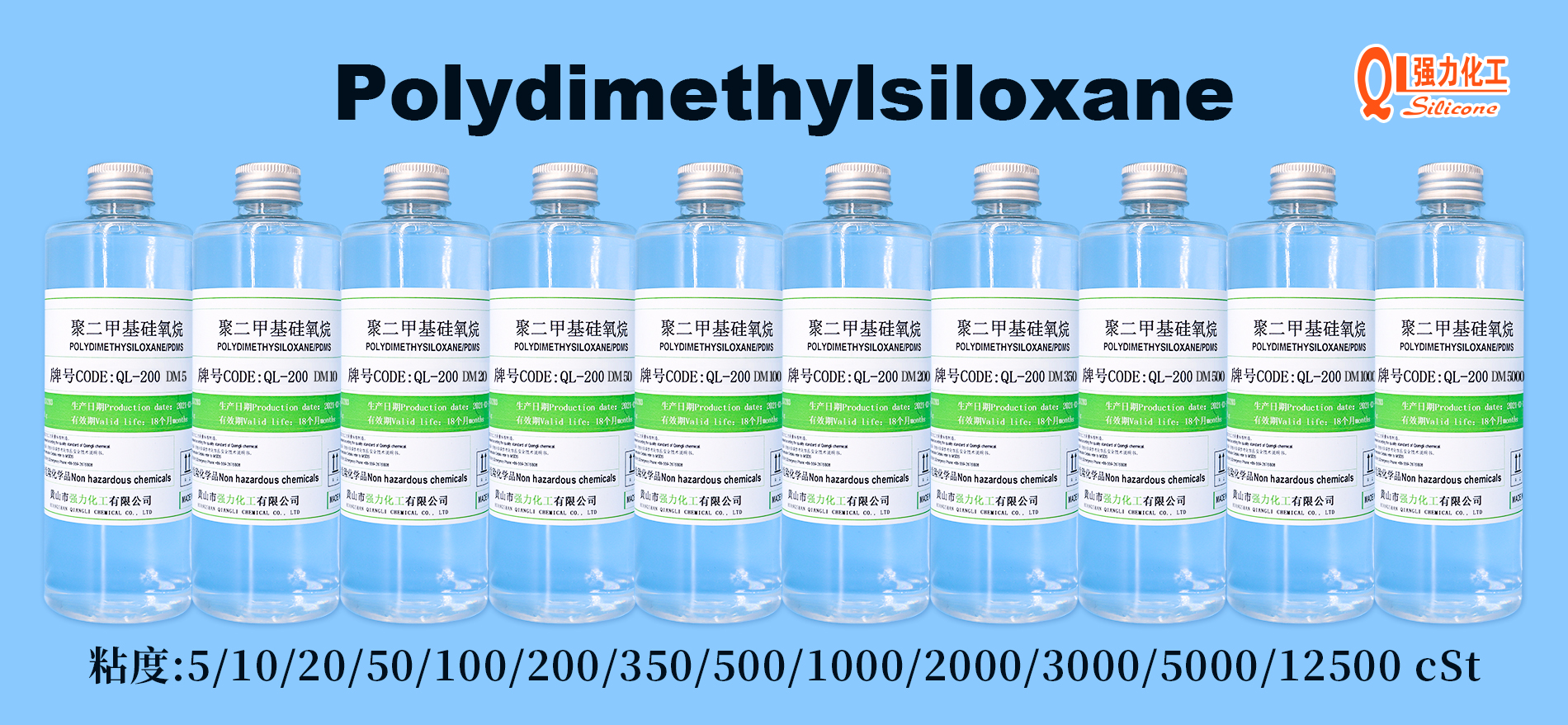Dimethyl silicone oil can be applied to PET films, and it is quite common in practical applications. Its functions mainly focus on improving the surface properties of PET films, as follows:
1. Imparting excellent hydrophobicity and moisture resistance
Although PET films themselves have a certain degree of water resistance, their surfaces still have weak polarity. Long-term contact with water or humid environments may lead to slight water absorption. As a low surface energy substance (surface energy is about 20-22 mN/m, much lower than that of water, which is 72 mN/m), dimethyl silicone oil can form a hydrophobic layer on the surface of PET films after coating, significantly reducing the adhesion of water:
- Water droplets can form a large contact angle (usually more than 110°) on the film surface, achieving the "lotus leaf effect" and reducing water residue;
- It is suitable for scenarios requiring moisture resistance, such as packaging films (preventing contents from getting damp) and protective films for electronic devices (isolating water vapor erosion).
2. Providing lubricity and anti-adhesion
The surface smoothness of PET films is limited, and they are prone to static electricity or adhesion due to friction during winding, processing, or use (especially when stacked in multiple layers). The coating of dimethyl silicone oil can:
- Reduce the friction coefficient of the film surface, reducing friction damage during processing (such as scratches during film slitting and printing);
- Endow "anti-adhesion" properties, avoiding unnecessary adhesion between films or between films and other objects (such as tapes, inks), improving usability (for example, used in release films, label base films, etc.).
3. Enhancing weather resistance and chemical resistance
PET films may experience aging, yellowing, or corrosion when exposed to ultraviolet light, high temperatures, or chemical environments for a long time. Dimethyl silicone oil has excellent chemical stability (resistant to oxidation, acids, and alkalis). After coating, it can form a protective film on the PET surface:
- Slow down the damage of ultraviolet light to PET molecular chains and delay aging;
- Reduce the erosion of PET films by acids, alkalis, organic solvents, etc. (especially suitable for industrial chemical-resistant films).
4. Adjusting surface gloss and hand feel
By controlling the coating amount and viscosity of silicone oil, the surface texture of PET films can be fine-tuned:
- Coating low-viscosity silicone oil (such as 500-1000 cSt) can make the film surface smoother and slightly increase gloss;
- Appropriate coating can make the PET film feel smoother, which is often used in decorative PET films (such as matte/bright films for packaging).
Precautions
- Coating method: Suitable processes (such as gravure coating, spraying, dip coating, etc.) should be adopted to ensure uniform film formation of silicone oil; uneven coating may lead to differences in surface properties (such as insufficient local hydrophobicity, or surface stickiness due to excessively high viscosity).
- Adhesion: The surface polarity of PET films is low, so direct coating of silicone oil may have insufficient adhesion. The PET film can be corona-treated first (to increase surface tension), or modified silicone oil with a small amount of reactive groups (such as amino silicone oil) can be selected to enhance the bonding force with PET and prevent the silicone oil layer from falling off.
- Dosage control: Excessive coating may make the film surface too greasy, affecting subsequent processing (such as the adhesion of inks/adhesives during printing and lamination). The coating amount is usually controlled at 0.1-1 g/m².
In summary, the core role of dimethyl silicone oil applied to PET films is to optimize surface performance, especially in terms of hydrophobicity, anti-adhesion, and lubrication. It is widely used in the modification of PET films in packaging, electronics, building materials, and other fields.




